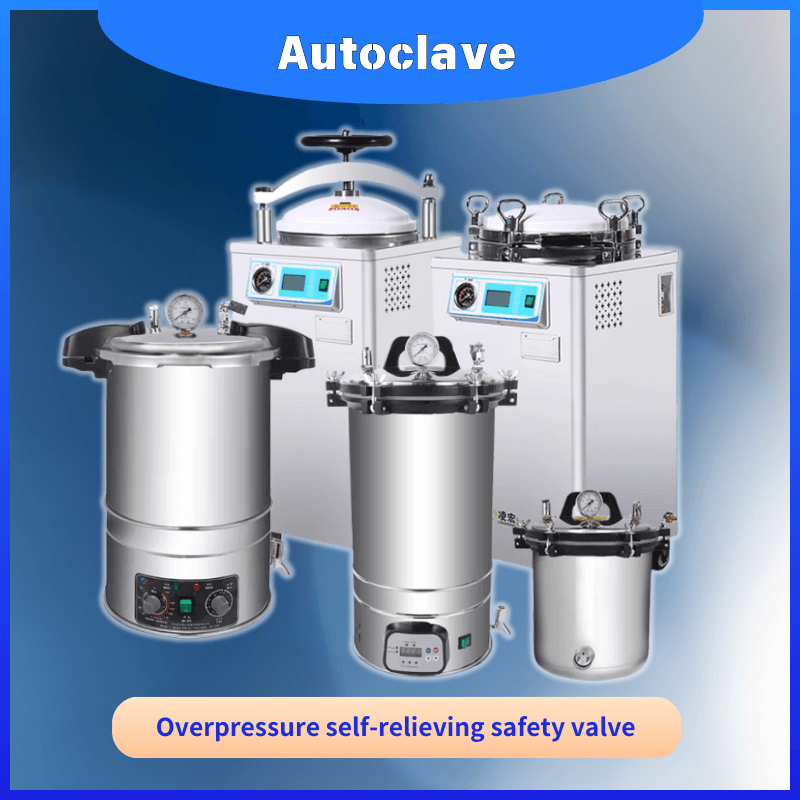
Autoclave timing describes how long instruments and materials remain in contact with pressurized steam at predetermined temperatures inside an autoclave. Proper timing during the sterilization cycle ensures complete destruction of all microorganisms such as bacteria, viruses and spores.
Several factors determine the necessary sterilization time including material type, load configuration and the chosen autoclave cycle. Incomplete sterilization due to insufficient timing can endanger patient safety by creating a possibility for healthcare-associated infections to develop.
The sterilization time requirement changes based on how different materials tolerate heat and moisture. Porous substances and moisture-absorbing materials typically need extended steam exposure times compared to non-porous materials.
Item arrangement inside the autoclave has a direct impact on steam distribution which determines the duration needed for effective sterilization. When the autoclave chamber becomes overloaded it blocks steam circulation which leads to inconsistent sterilization results. The arrangement of instruments in terms of spacing and orientation directly influences their successful sterilization.
Autoclaves provide multiple sterilization options such as gravity displacement cycles as well as pre-vacuum and steam flush pressure pulse cycles. The timing for each sterilization cycle varies according to the load and materials used. Selecting the right sterilization cycle for your particular requirements ensures effective sterilization results.
Duration of sterilization depends directly on the selected temperature and pressure levels. Increased temperature and pressure settings decrease sterilization duration but reduced settings require longer exposure times.
The following guidelines show the recommended autoclave cycle sterilization times for common procedures:
121°C (250°F) at 15 psi: 15-30 minutes
134°C (273°F) at 30 psi: 3-10 minutes
The factors previously discussed can influence these sterilization times which must be confirmed with manufacturer instructions and standardized industry practices.
Biological indicators must be used to validate autoclave timing because they demonstrate the effectiveness of the sterilization process in killing microorganisms. Maintaining industry regulation compliance requires consistent monitoring and documentation of sterilization cycles.
Strictly follow the manufacturer’s guidelines regarding timing and conditions in all operations. The guidelines draw on comprehensive testing to establish safe and effective sterilization procedures.
All staff members who take part in the sterilization procedure must receive proper training. Personnel must know how critical timing is and learn proper autoclave loading procedures as well as why monitoring sterilization cycles matters.
Load items into the autoclave so steam penetration reaches all surfaces effectively. Do not fill the chamber beyond its capacity and arrange all items to allow steam to flow unhindered. Utilize autoclave-specific trays and racks for better operational efficiency.
Establish a solid monitoring system that keeps track of sterilization cycles while recording time, temperature, and pressure data. Maintaining proper documentation during sterilization processes ensures compliance with regulations and enables effective troubleshooting of operational problems.
Maintaining autoclaves through routine checks enables them to function at peak efficiency. The routine inspection of pressure gauges along with temperature sensors and sealing systems helps prevent operational problems that could disrupt sterilization schedules.
Professionals in the medical equipment supply chain need to understand autoclave timing to operate effectively. Through proper understanding of timing influence factors and adherence to best practices distributors along with procurement specialists and healthcare professionals will guarantee medical instruments remain safe and effective. Achieving optimal sterilization outcomes depends on consistent training and following manufacturer guidelines together with correct load setup.
Contact our team for detailed information about autoclave timing and best practices.
The minimum sterilization time typically ranges from 3 to 30 minutes, depending on the temperature and pressure settings used.
Consult the manufacturer’s guidelines and industry standards for specific recommendations regarding sterilization times for various materials.
Validating autoclave timing ensures that the sterilization process has effectively killed all microorganisms, thereby ensuring patient safety and compliance with regulations.
Biological indicators are tests that use live microorganisms to confirm that the sterilization process was effective. They are placed in the load during sterilization and checked afterward for survival.
Autoclaves should undergo routine maintenance at least every six months, or more frequently if they are used extensively, to ensure they operate correctly and safely.
For inquiries, please contact us at inquiry@shkeling.com or reach out via WhatsApp at +8618221822482. Visit our website for more information: Keling Medical.

The medical industry relies on sterilization as an essential procedure to maintain the functional safety of medical instruments and equipment. Bead sterilizers stand out among different sterilization methods for their

The sterilization process of medical equipment depends heavily on autoclaves which ensure all harmful microorganisms are eradicated from instruments. An autoclave remains effective only when it undergoes consistent testing and

The medical field relies on autoclaving to sterilize instruments and equipment by eliminating dangerous microorganisms. The success of autoclaving requires strict adherence to detailed testing procedures. Autoclave testing confirms the

In healthcare facilities autoclaves serve as vital tools for sterilizing equipment and instruments to maintain patient safety. An autoclave’s performance relies heavily on the pressure level which is quantified in

The sterilization of medical instruments through autoclaving effectively removes harmful microorganisms from their surfaces. Accurate timing is critical to the success of this process because it determines whether complete sterilization

The medical field relies heavily on sterilization to ensure all medical instruments and devices remain free from dangerous microorganisms. Autoclaving stands out as an exceptionally effective sterilization method because it